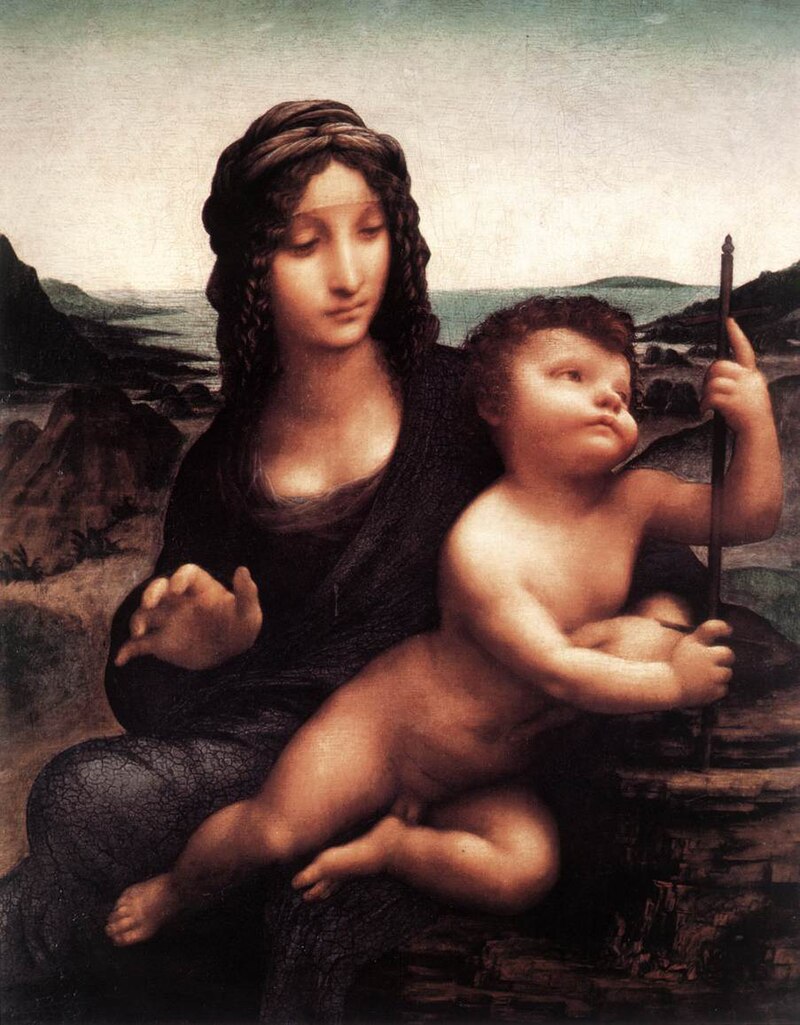“Art is never finished, only abandoned.”-Leonardo da Vinci
Leonardo was,
and is, renowned primarily as a painter. Among his various creations, the most
known is the famous and parodied “Mona Lisa” and also “The Last Supper”. His
drawing of the “Vitruvian Man” is also known as a cultural icon, it has been
produce in any sources of media across time, such as, books, the euro coin,
clothing, room deco, etc. Few of his works had survived, fifteen to be more
exact, nevertheless, these works, together with his own hand-writing notebooks,
compose a big contribution to future generations of artists.
.jpg) |
| "Mona Lisa" by Leonardo da Vinci (1517) |
| The "Last Supper" by Leonardo da Vinci (1495-'98) |
Today, this man
is known for his diverse talent, and for now we are focusing in his artistic pieces
that we can nowadays see. Da Vinci´s paintings are so famous because a variety
of qualities, which have been imitated by students across the centuries. This
qualities that make Leonardo´s work so distinctive are the innovative
techniques that he used on his paintings, his vast knowledge about the human
body´s anatomy, his interest for physiognomy and how he succeeded in shaping
our emotions and gestures, and his used of tonality gradation. All this qualities
that described Da Vinci´s work come together and create his most famous
paintings, such the Mona Lisa, the Last Supper, and the Virgin of the Rocks.
 |
| The "Virgin of the Rocks" by Leonardo da Vinci (1486-'96) |
- Some of his most known paintings:
Mona Lisa: also known as “La Gioconda”, an
oil on a white Lombardy poplar panel portrait of Lisa Gherardini, the wife of
Francesco Giocondo, this pictures a woman with a very enigmatic expression, and
this is why artists, and people around the world is still so fascinated with
it.
Baptism of Christ: This was painted by
Leonardo in Verrochio’s workshop when he (Leonardo) was his pupil. The picture
shows the Biblical Gospel of Matthew, Mark and Luke, were it tells the Baptism
of Jesus Christ by John the Baptist.
 |
| Baptism of Christ |
The Annunciation: This oil and tempera on
poplar panel was once considered to be done by Verocchio until 1869. This
pictures the bible verse in Luke 1:26-39, where the angel Gabriel announces to
Mary the she will conceive and give birth to the messiah, Jesus, the son of God.
 |
| The Annunciation |
Madonna of the Carnation: This painting is
probably done in Tempera, and oil in poplar panel, this work is considered to
be Leonardo’s even though it has some over painting done by a Flemish artist.
The “Madonna of the Carnation” is focused in Mary with baby Jesus over her lap,
she is wearing precious jewelry and fine clothes, and she is holding a
carnation in her left hand, which symbolizes health. In this painting it is
pictured that baby Jesus is looking up, while Mary isn’t doing any eye contact
with her child.
 |
| Madonna of the Carnation |
The Madonna of the Yarnwinder: This
painting is done with oil on walnut panel shows the Virgin Mary seated in a
landscape with Jesus Christ, who is gazing at a yarnwinder, this is a symbol of
Mary’s domesticity and as a foreshadowing of the cross on which Christ was
crucified.
 |
| Madonna of the Yarnwinder |
As an admirer of da Vinci's artwork, once he said "The painter has the Universe in his mind and hands", and I think that throughout his life, he has applied his own concept as a painter, he did wonderful pieces of art, his innovative technique, is just something that has revolutionized for all the students that had followed his steps. My favorite paintings of his, is the "Mona Lisa", and "La Scapigliata", I remember seeing them when I was really young, and looking at the details that he had for the female features, that got me, that's was the time that I was sure that drawing was something I wanted in my life. Leonardo da Vinci has been a big influence in me, and I'm a big fan of his work.
Authors: Elizabeth Cisneros Tlaxcala
Portrait of Cecilia Gallerani (The Lady with the ermine) 1490: This painting is a masterpiece of Renaissance Art. In this picture Cecilia is holding Ermine in her arms. This painting represents virtue and purity. DaVinci used his technique sfumato in this picture to create a fine and gradual tonal changes around the eyes and mouth.
Authors: Jolene Hall
Beautiful!
ReplyDeleteBeautiful descriptions of his paintings. I always found the speculation behind his techniques and motivation for his paintings interesting. Especially when it comes to his religious paintings depicting miracles and original sacraments.
ReplyDeleteHis paintings all seem to have a very religious meaning in all of them. My favorite is The last Supper.
ReplyDeleteI thought that it was quite interesting that his picture the Mona Lisa took almost 10 years to complete. With that being said is probably the reason that he only could complete 15 paintings.
ReplyDeleteI found it very interesting the motivation he had behind his paintings. Your descriptions were very nice to learn from. Crazy one painting took 10 years to finish
ReplyDeleteDaVinci was definitely a creative mind and it's awesome how you explained that with his artwork.
ReplyDeleteHe definitely deserves to be viewed as one of the greatest painters of all time. The time and hard thought he put into all of his pieces is jaw-dropping.
ReplyDeleteGreat job! I really like how you have organized the information. All of his paintings are so unique. I think all of DaVinci paintings conveys a message.
ReplyDelete